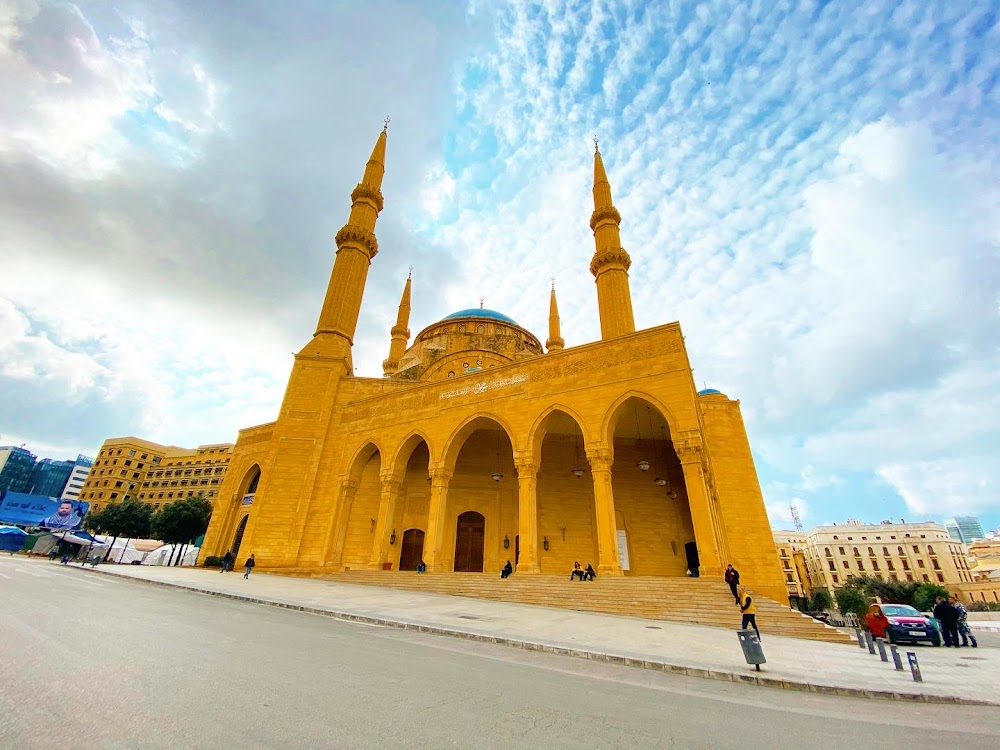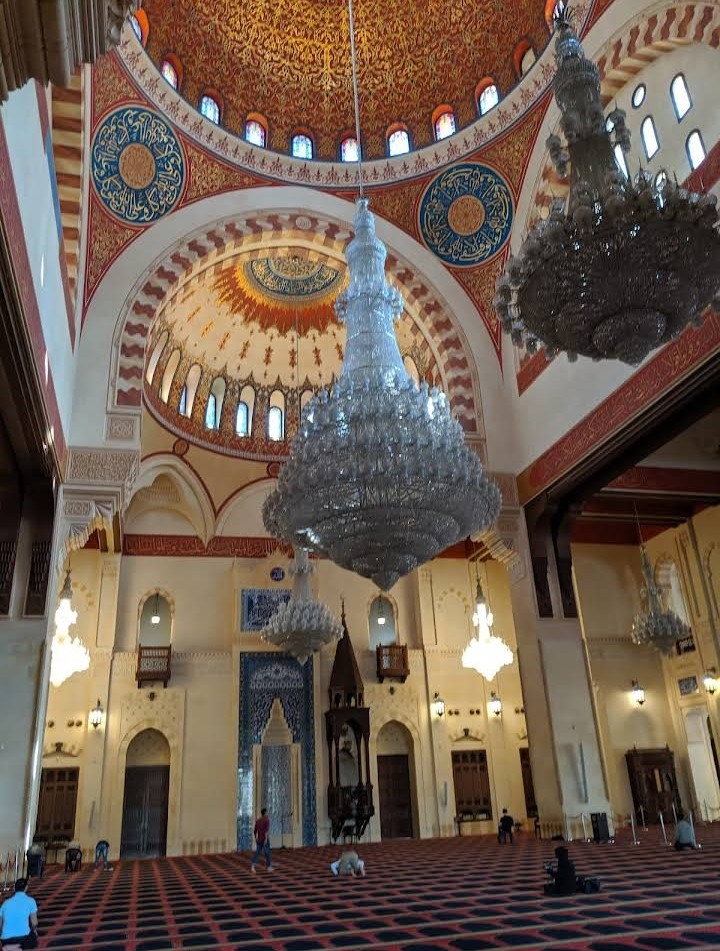Mohammad Al-Amin Mosque (مسجد محمد الأمين)
Overview
Discovering Mohammad Al-Amin Mosque
The Mohammad Al-Amin Mosque, often referred to as the Blue Mosque, is a breathtaking and culturally significant landmark located in the heart of Beirut, Lebanon. Situated in Martyrs' Square, this mosque stands as a powerful symbol of resilience and hope for the Lebanese people, reflecting their enduring spirit amidst challenges.
The Vision Behind the Mosque
The mosque was conceived in the early 1970s by the late Lebanese Prime Minister Rafik Hariri, who envisioned it as a grand place of worship meant to serve the Muslim community while fostering communal ties within the city. Unfortunately, the onset of the Lebanese Civil War in 1975 delayed the project, causing extensive damage to Beirut and halting many construction initiatives.
A Revival of Hope
It wasn't until the early 2000s that the dream of the mosque was rekindled. With Hariri returning to power, he took the lead in reviving the project. His personal dedication and financial support were pivotal in bringing the mosque to fruition. Tragically, Hariri was assassinated in 2005, yet the mosque was eventually completed, standing as a lasting tribute to his legacy.
Architectural Inspiration
The design of the Mohammad Al-Amin Mosque draws heavily from Ottoman architecture, particularly inspired by Istanbul's famous Blue Mosque. Renowned Lebanese architect Azmi Fakhuri was tasked with actualizing this vision, resulting in a stunning structure that beautifully combines classic Islamic architectural elements with contemporary influences.
Impressive Features
Construction officially commenced in 2002, and the mosque's most striking feature is its magnificent central dome, which soars to a height of 48 meters. Surrounding this dome are four towering minarets, each reaching 65 meters tall, creating a breathtaking skyline. The distinctive blue dome and minarets have earned the mosque its nickname, the "Blue Mosque."
Inside, visitors are greeted with intricate details that showcase exceptional craftsmanship. The interior is adorned with elegantly designed chandeliers, marble pillars, and exquisite mosaics. The main prayer hall can accommodate thousands of worshippers and features stunning calligraphic verses from the Quran, creating an atmosphere of reverence and beauty.
A Cultural Hub
Beyond serving as a place of worship, the Mohammad Al-Amin Mosque is a vital cultural and historical site. It has been the backdrop for national events and public gatherings, including commemorations and important speeches. Notably, Hariri himself is buried in the mosque's vicinity, where a mausoleum has been established in his honor.
A Symbol of Unity
Today, the Mohammad Al-Amin Mosque stands proudly amidst the vibrant cityscape of Beirut, its elegant silhouette symbolizing Lebanon’s rich history and culture, as well as its ongoing journey towards unity and peace. The mosque serves not only as a spiritual refuge for many but also as a powerful emblem of the human spirit's resilience against adversity.








